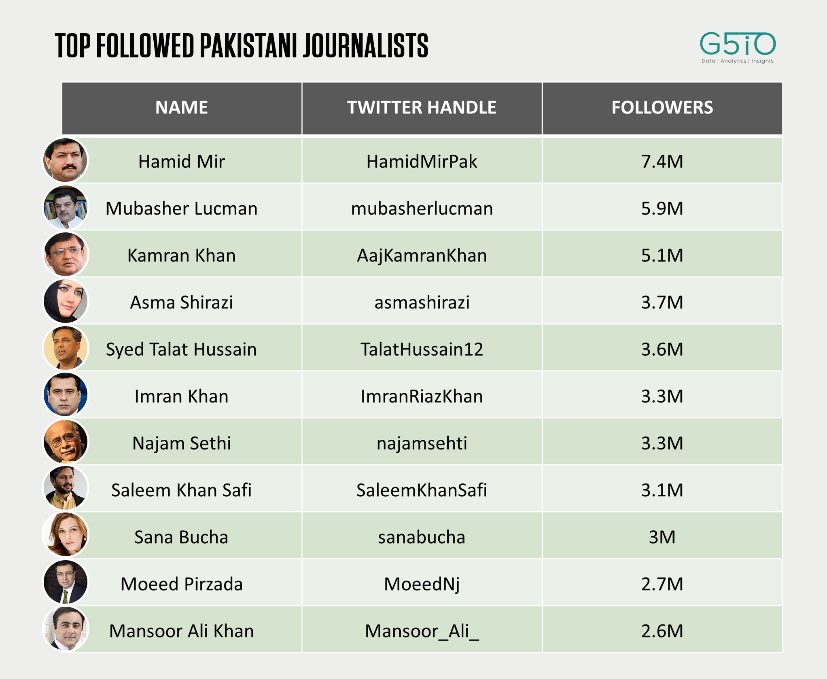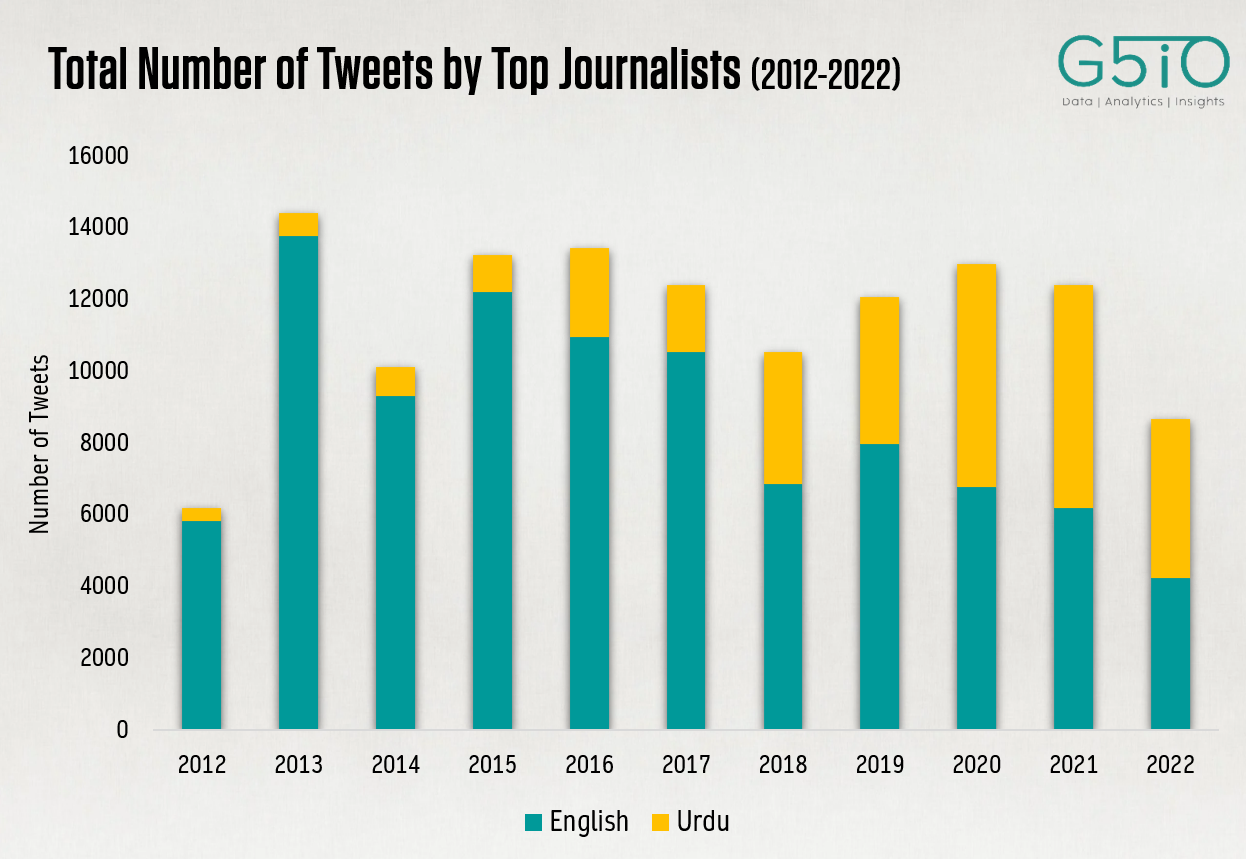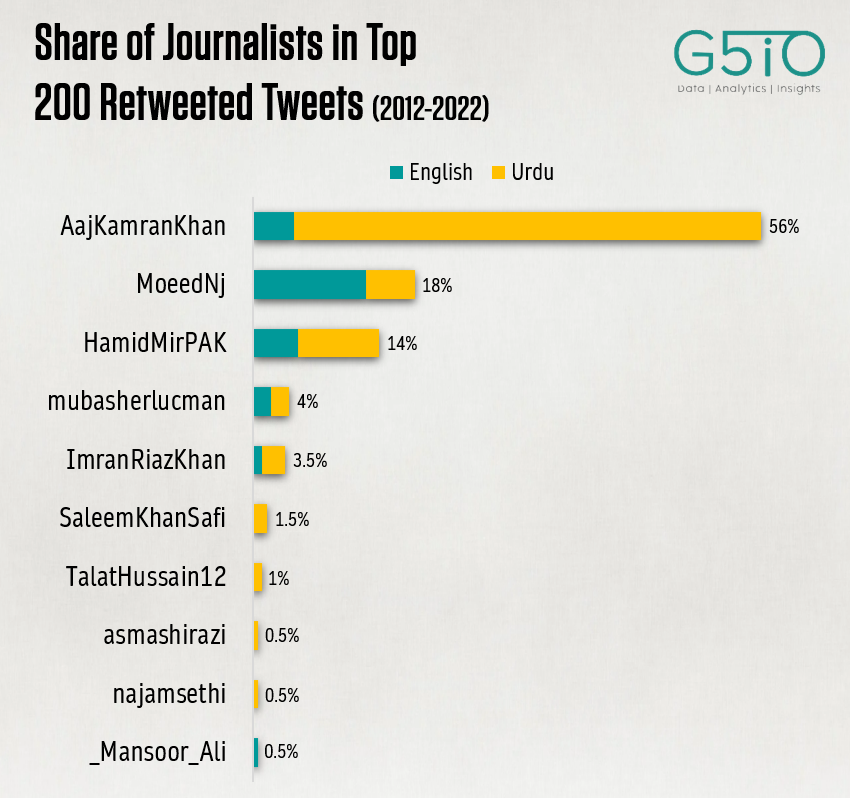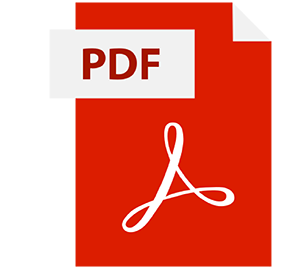Overview
Traditional news sources have experienced a marked decline over the years, resulting in a shift towards online and digital reporting. These changing patterns in news consumption have led reporters and journalists to increasingly invest in social media platforms to reach a broader audience. For example, just twitter has dramatically changed the way in which journalists now collect, produce, and propagate breaking news scoops and stories. With an impressive growth in usage in the last few years within Pakistan, Twitter has become a crucial hub for political discussions and news reporting – where instead of simply amplifying news stories from traditional media, digital and social media are now used to ‘lead’ and set national discussions and narratives.
In this report, our team mapped out the digital behaviour of some of country’s most popular and influential journalists. Based on their twitter timelines from the last decade, we analysed and compared not only their changing influence and popularity over time, but also which issues and topics they focused on the most based off a rigorous textual analysis.
Methodology
Our dataset was constructed from the timelines of the 11 most followed Pakistani journalists on Twitter from July 2012 to July 2022. This comprised more than 140k tweets from a combined set of accounts each with at least 2.5 M followers. These were then used to compare and contrast their overall influence, social media engagement and general tilt on key issues, events and organizations over the last decade.

Twitter Activity Over the Years
To start with, we analysed the overall frequency of tweets posted by each of these journalists across our selected timeframe. We can see from the graph below that 2013 saw the maximum activity with over 14 thousand tweets posted just that year. However, these were mostly in English or Romanised Urdu. This trend has changed considerably from 2016 onwards where the proportion of tweets in Urdu has grown dramatically.
For instance, tweets in Urdu comprised almost 50% of the combined tweet volumes of these journalists over the last 3 years – compared to 2017 where only around 15% of their tweets were in Urdu. Thus, indicating as to how these journalists have adapted their content to cater towards a growing, more diverse, and nationally representative audience on Twitter while maintaining similar levels of activity.

Digital Influence Over the Years
Compared amongst one another, each journalist’s influence and impact on Twitter has also fluctuated considerably over the last decade. Measured in terms of the number of times each of them was retweeted year on year, we saw that Mubasher Lucman was the most retweeted journalist from 2012 to 2014, getting ~150-200k retweets. In contrast, retweet numbers for Saleem Khan Safi and Kamran Khan were much lower during this period with each getting only a few thousand retweets. Over time however, Moeed Pirzada and Hamid Mir showed exceptional growth in 2015, getting more than 200k retweets each. From 2016 onwards, however Hamid Mir has been the most retweeted journalist on Twitter receiving over one million retweets each year. Interestingly, this trend has exhibited a significant change this year as both Moeed Pirzada and Kamran Khan have both surpassed Hamid Mir as of June 2022.

Journalists’ Engagement
Drilling down deeper into this dataset, we saw that out of the top 200 most retweeted posts from all these journalists over the last decade, about 142 were just from April 2022 onwards. These comprised tweets that were posted mostly in the context of the NCV against the then PTI government. This also explains why out of the top 200 most retweeted tweets from our entire dataset, 113 tweets are from Kamran Khan, followed by Moeed Pirzada (36 tweets) both of whom have taken openly pro PTI stances over the last four months. This is highly significant considering that Hamid Mir despite being Pakistan’s most retweeted journalist for the last five years came in third with only 28 tweets in our list of the top 200 most retweeted tweets from the last decade.
It’s also worth noting that out of this list of the top 200 most retweeted tweets, 149 are tweets posted in Urdu (with 101 being just by Kamran Khan).

Measuring Impact
In order to get a more holistic view of reach and impact we also liked at which journalists received the most amount of likes for their tweets, in relation to their overall activity levels and number of followers. We saw that despite tweeting less frequently compared to other journalists, Saleem Safi and Kamran Khan received the most positive audience engagement in terms of ‘median likes’ across all our data. In contrast, Mubasher Lucman and Moeed Pirzada with a comparatively greater number of tweets received much lesser ‘likes. This indicates that a large number of tweets and followers does not necessarily translate into greater positive engagement, especially when measured in terms of likes.

Content Analysis
Reapproaching this data from a more content rather than numbers’ perspective, we saw that each journalist also has a distinct tilt and brand based around their varying emphases on key issues. We gauged this by measuring and comparing some of the most prominent entities mentioned by these journalists which were then categorized based on key topics, political parties, organizations, and places. We saw that ‘Elections’ and terrorism stood out as the most frequently mentioned topics except for Kamran Khan, whose focus was instead more on COVID 19 and the economy. Out of the most mentioned organizations, the Army and NAB were the most prominently featured, with Talat Hussain instead focusing more on the ISI. India and Kashmir were the most prominently featured places mentioned, along with Pakistan and China, with Talat Hussain mentioning KPK and Pindi the most.

Conclusion
Overall, our study shows that digital journalism while playing an increasingly important role in shaping local narratives and discourses is itself undergoing certain key trends worth noting:
- The increasing level of positive engagement and popularity of Urdu tweets represents a growing online audience that is not just limited to the country’s English-speaking elite which the Pakistani Twitterverse has long been stereotyped as
- More tweets and followers do not necessarily translate into positive engagement.
- While the issues being covered by these journalists are mostly similar, it’s the way certain stances and narratives are presented within a changing political context that determine the level of positive engagement and reception across a growing digital audience

